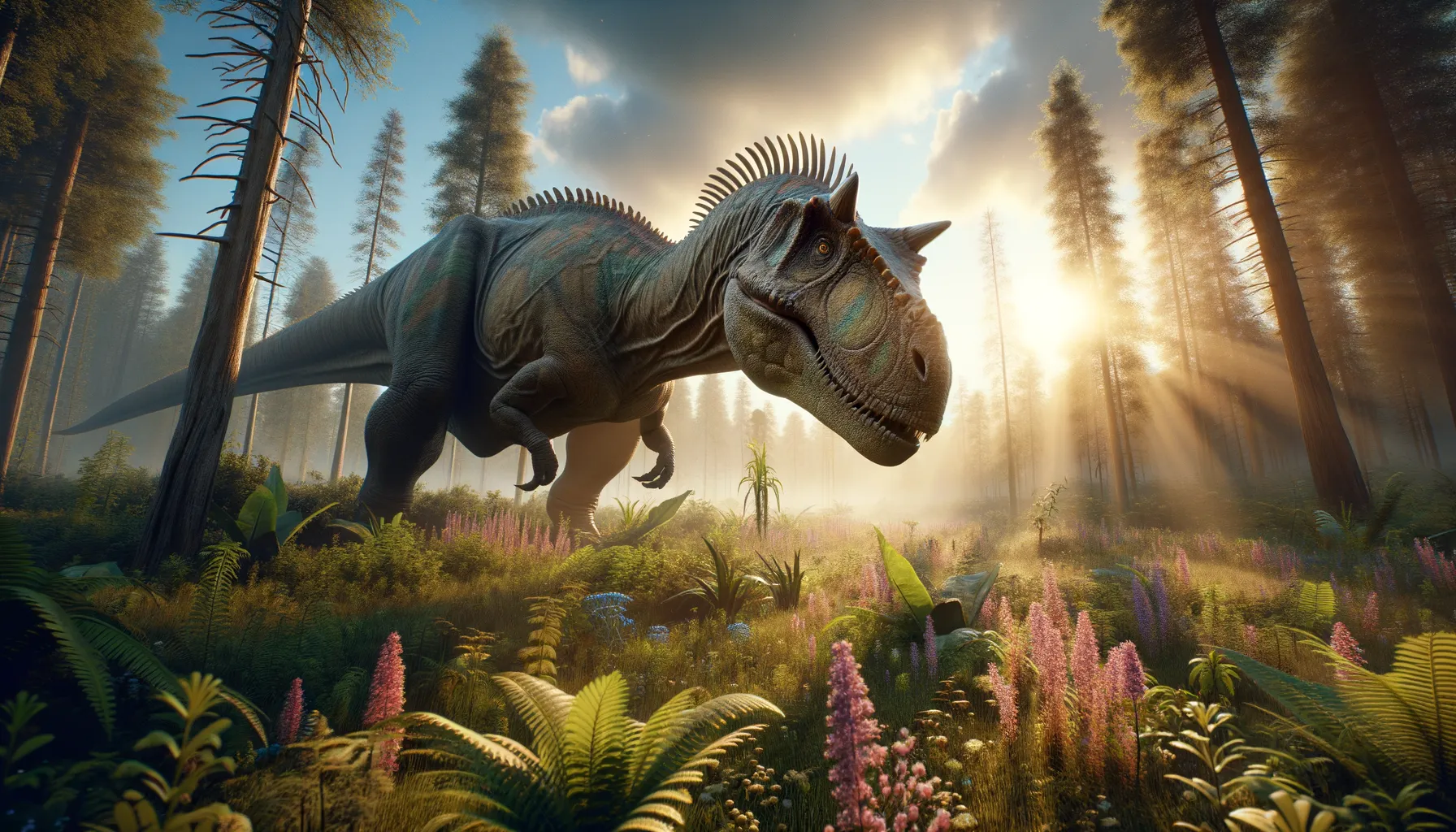
Riabininohadros
Graceful giant of the Cretaceous era.
Period
Cretaceous
Length
Estimated at around 7 to 10 meters long.
Height
Approximately 3 to 4 meters tall.
Weight
Estimated to weigh about two tons.
Riabininohadros, a lesser-known herbivorous dinosaur, roamed the Cretaceous landscapes of Eastern Europe. This species is primarily known from fossil remains found in Crimea, which provide valuable insights into the diversity of hadrosaurids. Despite its large size, the species likely exhibited slow movement, fitting its grazing lifestyle. As a herbivore, it contributed significantly to the ecosystem by managing vegetation and acting as prey for larger predators.
Diet
Riabininohadros was a herbivore, primarily feeding on the abundant plant life of the Cretaceous period. Its diet would have included ferns, cycads, and conifers, which were prevalent during its time.
Hunting
As a herbivore, Riabininohadros did not hunt but rather foraged for its plant-based diet. It would have used its beak-like mouth to clip vegetation and its grinding teeth to process plant material.
Environmental challenges
Riabininohadros faced numerous environmental challenges, such as finding sufficient food resources in its habitat. It had to adapt to varying climates and changing landscapes over time. Predation by larger carnivorous dinosaurs was a constant threat, requiring vigilance and possible herd behavior for protection.
Speed
Likely slow due to its size and build.
Lifespan
Estimated around 30 years in the wild.
First discovery
Discovered in 1945 in Crimea by Anatoly Riabinin.
Fun Facts
- Riabininohadros was a duck-billed dinosaur known for its distinctive snout.
- This dinosaur lived during the Late Cretaceous period, around 70 million years ago.
- Riabininohadros fossils were discovered in Eastern Europe, specifically in what is now Ukraine.
- It was a herbivorous dinosaur, feeding mainly on plants and possibly using its specialized jaws to grind tough vegetation.
- Riabininohadros is part of the Hadrosaur family, often nicknamed 'the cows of the Cretaceous' due to their grazing habits.
- The name 'Riabininohadros' honors the paleontologist Anatoly Ryabinin, who was instrumental in studying dinosaur fossils in Eastern Europe.
- Despite its size, Riabininohadros might have been a social animal, possibly moving in herds for protection against predators.
Growth and Development
The growth of Riabininohadros would have begun rapidly after hatching, as size was an important factor in survival. It is likely that juveniles remained close to adult members of the group to learn necessary survival skills. The development into a full-sized adult involved growing a sturdy frame capable of supporting its large size.
Habitat
Riabininohadros likely lived in floodplain environments with abundant vegetation. These areas provided the necessary plant life for their diet as well as water sources. The diverse ecosystems would have supported a variety of species, contributing to a complex food web.
Interaction with other species
Riabininohadros likely lived in groups for protection from predators. Its presence would have impacted the local plant life due to constant foraging. Interactions with carnivorous species would have involved evasion and possibly defensive herding behavior.
Natural lifespan
Its natural lifespan could reach up to 30 years.
Reproduction
Like other hadrosaurids, Riabininohadros would have reproduced by laying eggs. The nesting sites were likely chosen for safety and proximity to resources. Parental care may have included guarding the nests and possibly tending to young hatchlings in their initial vulnerable stages.
Social behaviour
Riabininohadros may have exhibited social behavior typical of herd animals, including coordinated movement and communication. Collective living would offer advantages such as protection from predators and sharing information about food sources.
Fossil locations
Fossil remains of Riabininohadros have been primarily found in Crimea, offering insight into the dinosaur fauna of the region during the Cretaceous period. These fossils contribute significantly to understanding the diversity of hadrosaurs in this geographic area.
